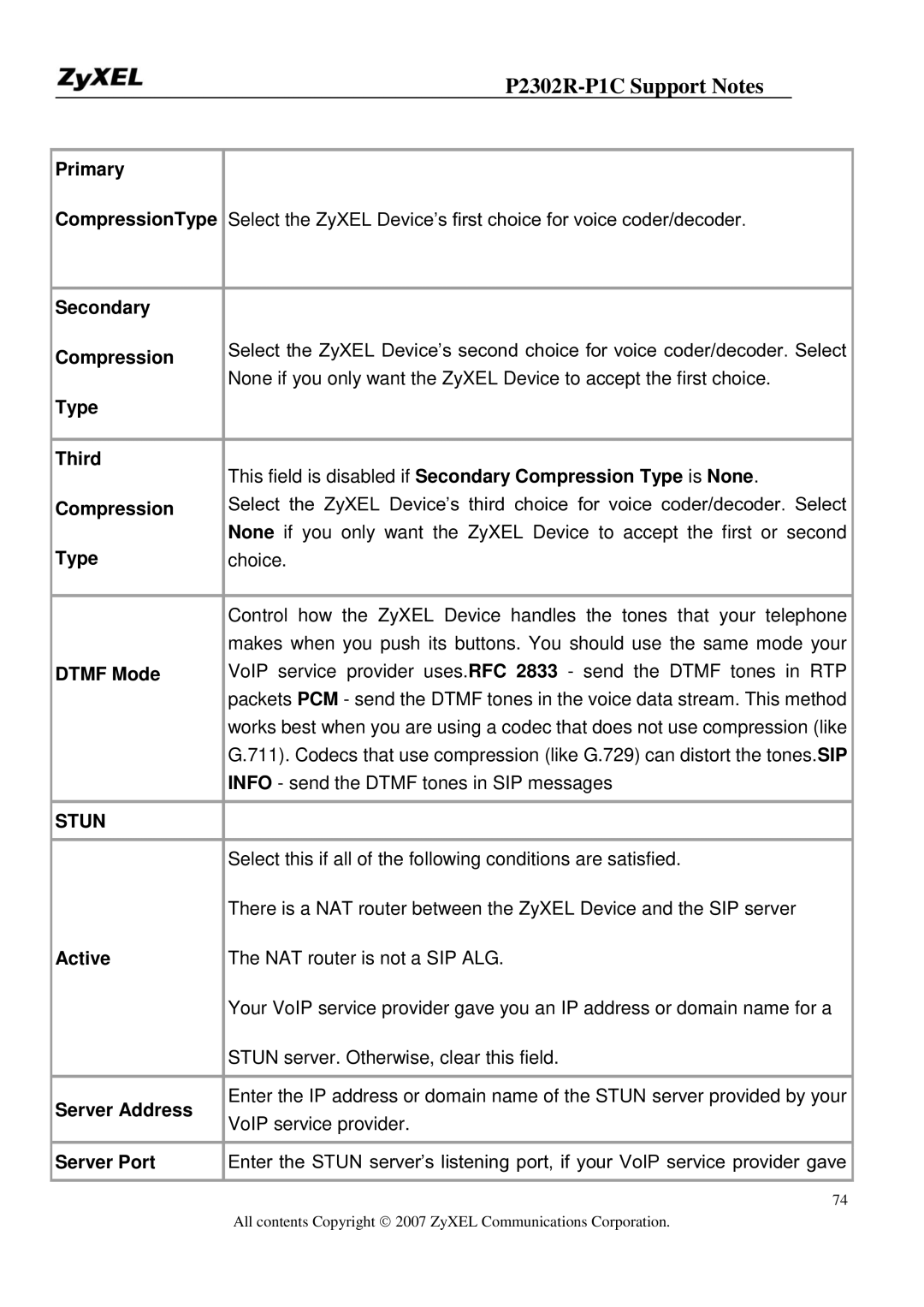
P2302R-P1C Support Notes
Primary
CompressionType Select the ZyXEL Device’s first choice for voice coder/decoder.
Secondary |
| |
Compression | Select the ZyXEL Device’s second choice for voice coder/decoder. Select | |
| ||
| None if you only want the ZyXEL Device to accept the first choice. | |
Type |
| |
|
| |
Third | This field is disabled if Secondary Compression Type is None. | |
| ||
Compression | Select the ZyXEL Device’s third choice for voice coder/decoder. Select | |
| None if you only want the ZyXEL Device to accept the first or second | |
Type | choice. | |
|
| |
| Control how the ZyXEL Device handles the tones that your telephone | |
| makes when you push its buttons. You should use the same mode your | |
DTMF Mode | VoIP service provider uses.RFC 2833 - send the DTMF tones in RTP | |
| packets PCM - send the DTMF tones in the voice data stream. This method | |
| works best when you are using a codec that does not use compression (like | |
| G.711). Codecs that use compression (like G.729) can distort the tones.SIP | |
| INFO - send the DTMF tones in SIP messages | |
|
| |
STUN |
| |
|
| |
| Select this if all of the following conditions are satisfied. | |
| There is a NAT router between the ZyXEL Device and the SIP server | |
Active | The NAT router is not a SIP ALG. | |
| Your VoIP service provider gave you an IP address or domain name for a | |
| STUN server. Otherwise, clear this field. | |
|
| |
Server Address | Enter the IP address or domain name of the STUN server provided by your | |
VoIP service provider. | ||
| ||
|
| |
Server Port | Enter the STUN server’s listening port, if your VoIP service provider gave | |
|
| |
| 74 | |
| All contents Copyright © 2007 ZyXEL Communications Corporation. |
